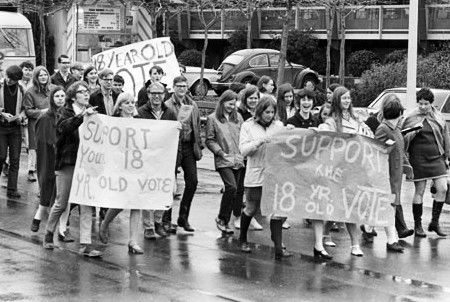A selected timeline of key policy changes
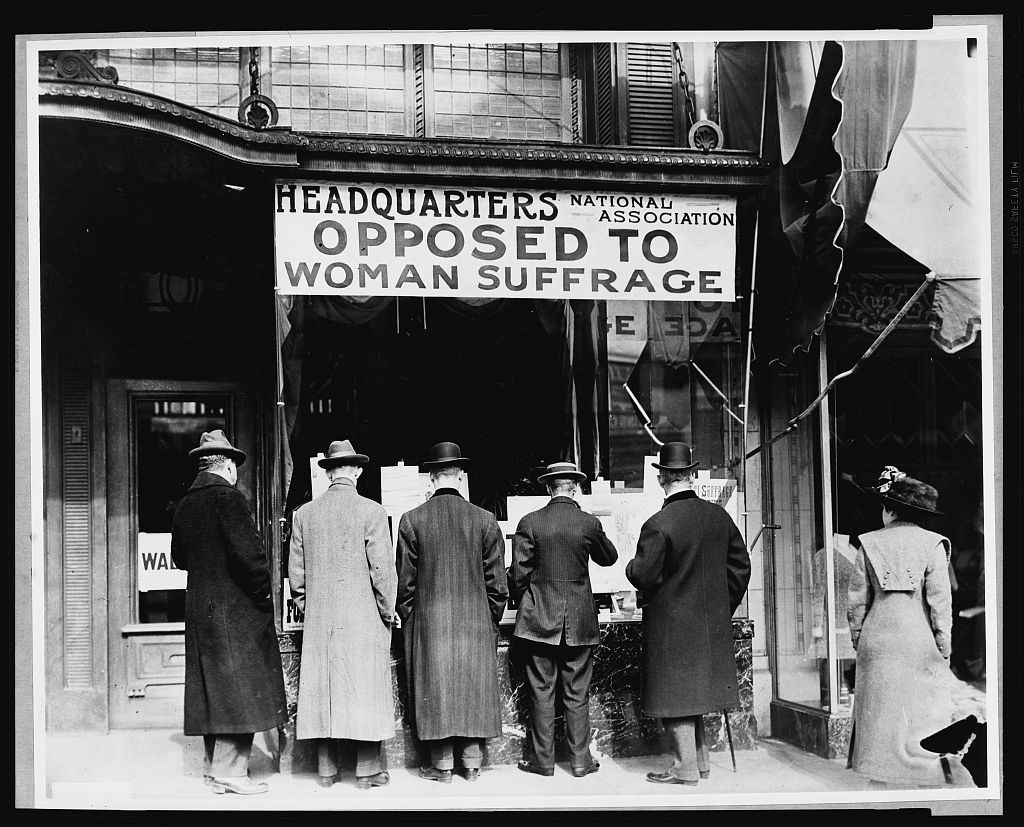
1920
The 19th amendment to the Constitution is ratified. Establishing women’s suffrage marks major milestone in the history voting rights. However, the benefits were not shared equally among all groups: Women of color and women from socially marginalized groups continued to face discrimination and barriers limiting their access to the vote.
1924
Native American women are granted voting rights four years after the ratification of the 19th amendment.
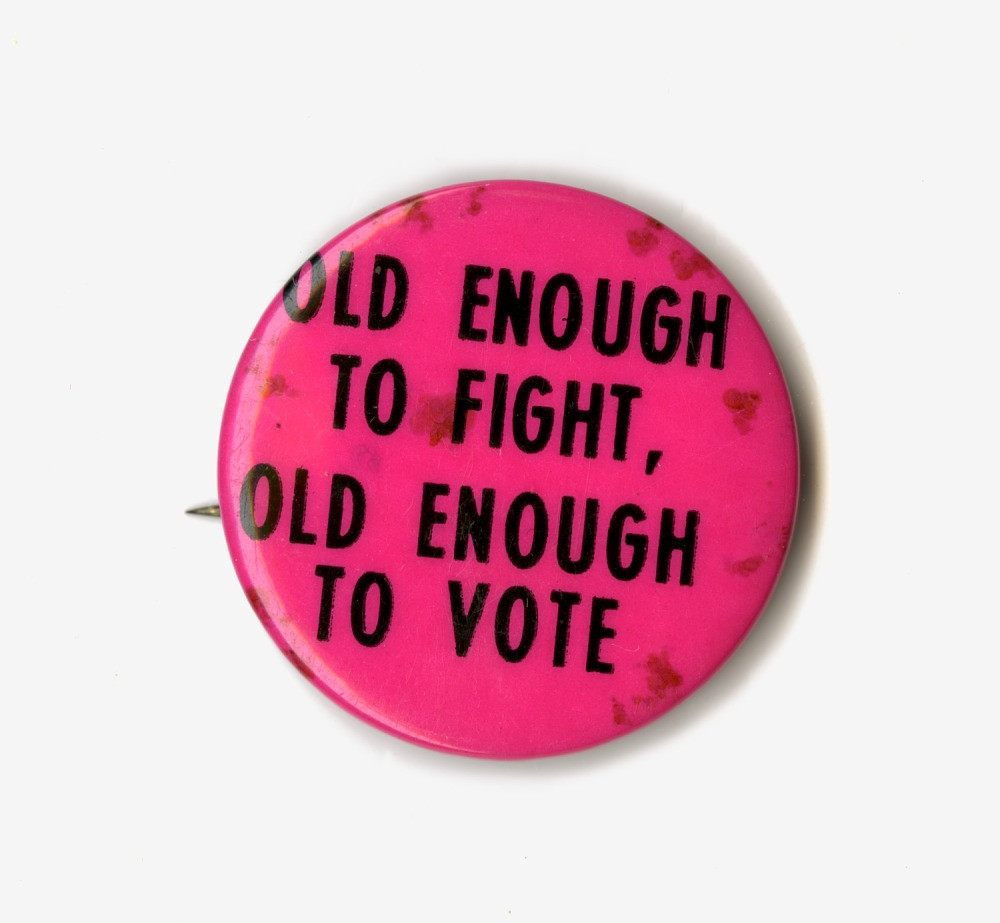
During World War II, when President Roosevelt lowered the minimum age of the military draft from 21 to 18. This change activated political leaders and young people to demand the voting age be lowered. They coined the slogan “Old enough to fight, old enough to vote,” which reappears during the debates surrounding the 26th amendment.
Image description: Pink button with text “Old enough to fight, old enough to vote”
They possess a great social conscience, are perplexed by the injustices in the world and are anxious to rectify those ills.
U.S. Congressperson Jennings Randolph (D-WV), a legislative champion on efforts to lower the voting age from 21 to 18. He would introduce legislation in Congress to lower the voting age 11 times during his tenure as a Representative and later Senator from West Virginia.
1943
Georgia is the first state to lower the voting age from 21 to 18.
1970
Under pressure from advocates arguing that anyone old enough to be drafted should also be able to vote, Congress enacts the Voting Rights Act of 1970, which lowers the voting age in federal elections from 21 to 18.
In Oregon v. Mitchell, Oregon challenges the constitutionality of the 1970 Voting Rights Act. Specifically, the question of whether the federal government can establish voting age for state and local elections is considered. In a 5-4 decision, majority ruled that Congress could only regulate the minimum age in federal elections, not in state and local elections.
1971
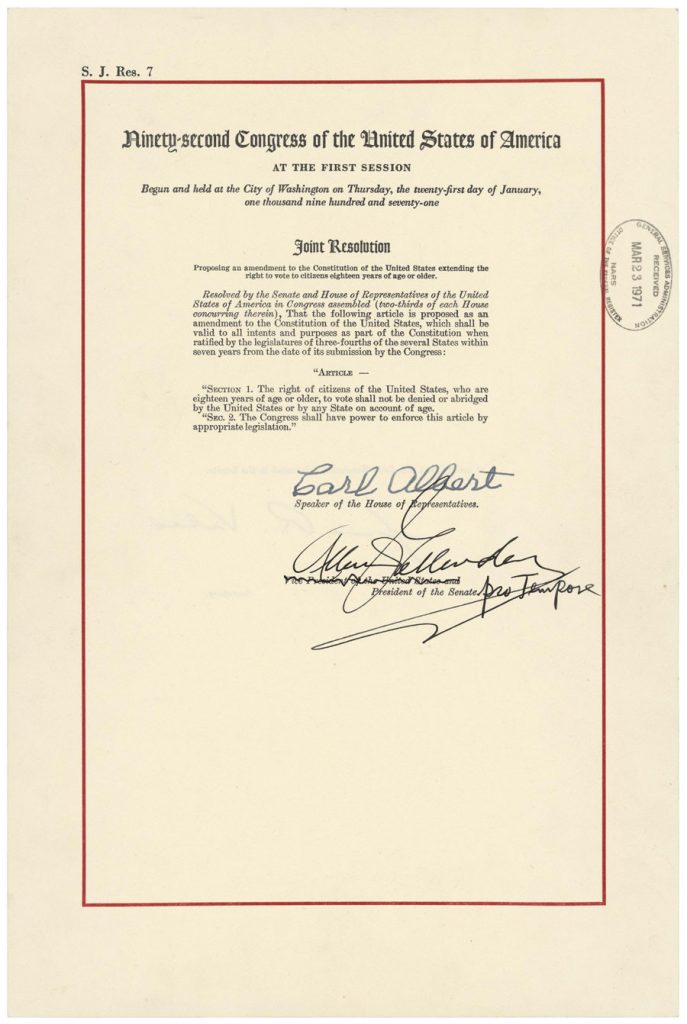
July 1, 1971: The 26th Amendment to the Constitution is ratified. This change extended voting rights to United States citizens 18 years of age or older.
Image description: Printed copy of Joint Resolution of the 92nd Congress of the U.S.A. signed by Speaker of the House and Senate President Source: U.S. National Archives
Source: Richard Nixon Presidential Library
1998
Vote-by-mail in Oregon: In 1998, Oregon voters passed a mandatory vote by mail system. Vote by mail has been correlated with higher voter turnout. It is also cheaper and more secure than other voting systems. In 2019, Oregon lawmakers passed a bill establishing pre-paid postage on Oregon ballots, eliminating the need for stamps on ballots.
2013
Shelby v. Holder County
2016
Automatic Motor-Voter Registration (Oregon): Implemented in 2016, this law makes voter registration automatic when customers register a vehicle or get a drivers’ license at the Department of Motor Vehicles, Preliminary research suggests that this program not only increased the number of voters on Oregon’s voter rolls but also diversified the population of voters in the state. Check out this PBS Newshour story for more detailed coverage.
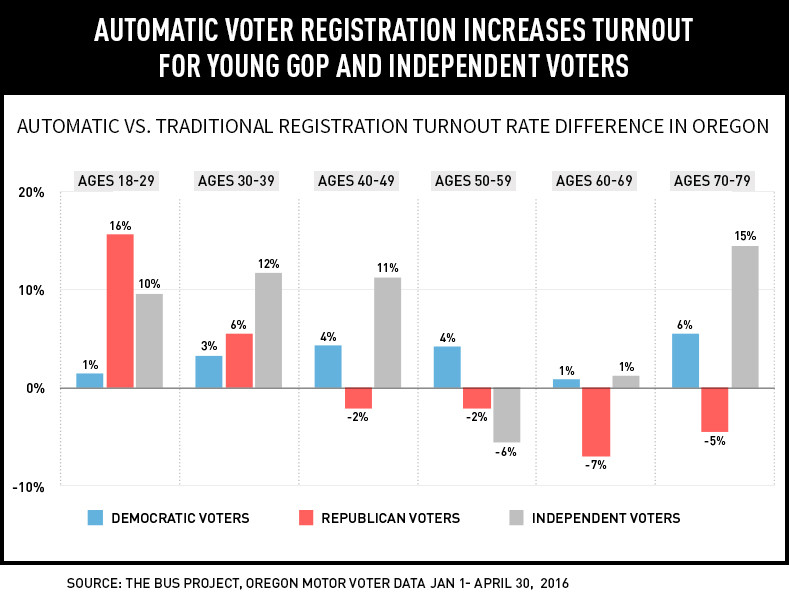
2019

Representative Ayanna Pressley (D-MA) introduces For the People Act, which would lower the voting age to 16 in all federal elections.
Image description: Portrait of Rep. Ayanna Pressley with U.S. flag in background.
